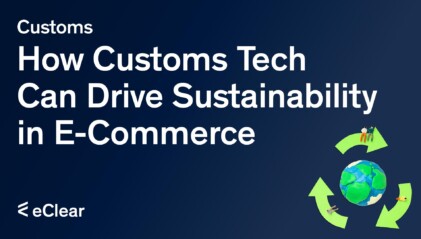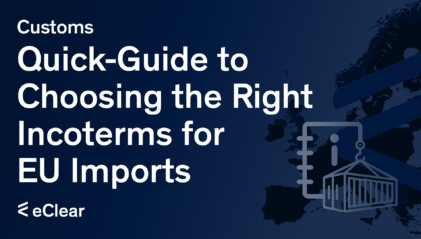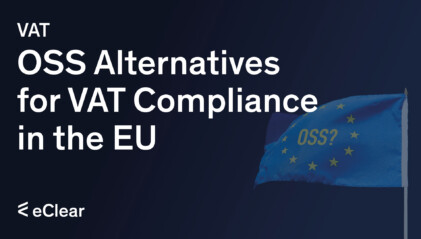Exporting goods from Japan to the European Union (EU) is a multi-stage process involving careful preparation, regulation compliance, and strategic execution. Japanese businesses can tap into a massive and diverse market by understanding the process and ensuring products and documentation adhere to EU standards.
Potential Benefits and Scale of Trade
Lucrative Market Access: The EU represents one of the world’s largest and most affluent consumer markets. Successful export to the region opens up vast potential for Japanese businesses to increase sales and expand their reach.
Diversification of Sales: Exporting to the EU helps businesses diversify their customer base and reduce reliance on any single market.
Enhanced Brand Reputation: The EU is known for high-quality standards, successfully exporting to the region can boost a Japanese company’s reputation globally.
EU Standards and Compliance
Understanding and adhering to EU regulations is crucial for successfully exporting goods from Japan. The EU maintains rigorous standards to ensure consumers’ safety and the protection of the environment.
Product Safety and Regulations
The General Product Safety Directive (GPSD) sets general safety requirements for most consumer products. When used commonly, products must not pose a risk to consumers’ health and safety.
Sector-Specific Regulations: Many product categories have additional sector-specific regulations. These might cover areas such as electrical safety, chemicals (REACH), food safety, cosmetics, toys, and medical devices.
Environmental Considerations: The EU has strict regulations concerning energy efficiency, hazardous substances, packaging waste, and eco-design.
Product Labelling
Language: Labels must generally be in the official language(s) of the EU country where the product is marketed.
CE marking signifies conformity with relevant EU safety, health, and environmental standards.
Origin Information: “Made in Japan” must be indicated.
Additional Requirements: Specific products might require additional labelling, such as warnings, ingredient lists, and certifications.
Restricted and Prohibited Goods
Certain goods are either prohibited from import into the EU or have strict restrictions:
- Prohibited: Counterfeit goods, certain endangered animal and plant species, illegal drugs
- Restricted: Firearms, some agricultural products, pharmaceuticals
Example: A Japanese company exporting electronic devices to the EU must ensure compliance with electronics regulations, CE marking requirements, labelling in appropriate languages, and restrictions on hazardous substances (RoHS directive).
Essential Documentation
Meticulous preparation of export documentation is vital to a smooth journey through EU customs and ensures timely delivery to your buyers. Here’s a breakdown of the core documents you’ll likely need:
Commercial Invoice
It serves as the primary record of the transaction between the exporter and importer. EU customs require it for the valuation and application of tariffs and duties.
Essential Elements:
- Seller and buyer information (name, address, contact details)
- Invoice date and number
- Detailed description of goods (including HS code classification, if known)
- Quantity and unit of measure
- Value of each item and total invoice value
- Currency used
- Incoterms® (terms of sale defining responsibilities for shipping, insurance, and costs)
- Country of origin
- Payment terms
Certificate of Origin
Certifies the origin of the goods being exported. It may be required to qualify for preferential tariff rates under trade agreements.
How to obtain: Typically issued by local Chambers of Commerce or other authorised bodies in Japan.
Packing List
Provides a detailed itemisation of the shipment’s contents. Helps with customs clearance and assists buyers in verifying their orders.
Typical Information:
- Shipper and consignee details
- Invoice number
- Date of shipment
- Description of goods
- Quantity
- Weight and dimensions of packages
Shipping Documents
Bill of Lading (sea freight) or Airway Bill (air freight): This document serves as a contract of carriage and receipt of goods by the carrier.
Insurance Documents: Protect your shipment against loss or damage during transit.
Additional Documentation:
Import Licences: Required for certain restricted goods.
Phytosanitary Certificates may be required for agricultural products.
Specific Industry Documents: Additional documentation might be needed depending on the type of good.
Important: Prepare documents accurately. Errors or inconsistencies can lead to costly delays and penalties.
Strategies for Effective Export/Import
Successfully exporting to the EU involves more than just regulatory compliance. Strategic planning in the following areas will help pave the way for smooth operations and increased sales:
Logistics and Shipping
Freight Forwarders: Partner with reliable freight forwarders experienced in shipping from Japan to the EU. They handle your logistics, documentation, and potential customs clearance.
Incoterms: Clearly understand Incoterms (rules for dividing costs, responsibilities, and risks) with your buyer. This ensures no surprises for either party.
Optimising Routes: Consider factors like the urgency of delivery, shipping costs, and the types of goods to select the most efficient shipping routes (sea vs. air freight, port of entry, etc.).
Customs Procedures
Tariffs and Duties: Research applicable tariffs for your goods using the EU’s online tools (e.g., Access2Markets). You may be eligible for duty reductions under the EU-Japan trade agreement if your goods qualify.
Customs Clearance: Familiarise yourself with EU customs processes, or use a customs broker to handle the clearance on your behalf.
Potential Simplifications: Explore procedures such as authorised exporter status that may streamline customs formalities.
Market Research
EU Consumer Demands: Thoroughly research the specific needs and preferences of EU customers in your target market segment.
Competitor Analysis: Identify your competitors and analyse their products, pricing, and marketing tactics.
Local Market Preferences: Be aware of variations in preferences and regulations between EU member states.
Partnership and Distribution
Distributors: Consider partnering with well-established EU distributors with in-depth market knowledge and sales networks.
Agents: Sales agents can help represent your interests and promote your products to EU buyers.
Japan-EU Trade Agreements
Trade agreements between Japan and the EU can significantly reduce costs and simplify procedures for exporters, making it easier to reach this valuable market.
EU-Japan Economic Partnership Agreement (EPA)
The EPA entered into force in 2019, focusing on reducing trade barriers and promoting investment.
Benefits for Exporters:
- Substantial tariff reductions or elimination on most goods traded between Japan and the EU.
- Simplified customs procedures and potential for reduced paperwork.
- Recognition of specific standards and certifications, which may streamline the compliance process.
- Increased access to government procurement opportunities.
Qualification Criteria:
To benefit from the EPA’s preferential tariffs, your goods must meet the rules of origin requirements. This typically means the goods must be wholly produced in Japan or undergo sufficient transformation.
Other Relevant Agreements
Depending on the nature of your goods, additional agreements may apply, focusing on specific products or industries.
How to Leverage the EPA
- Check Tariff Reductions: Use the Access2Markets tool or consult a customs broker to determine how the EPA impacts your goods.
- Obtain Certificates of Origin: Ensure you can provide the required Certificates of Origin to claim preferential tariff treatment.
- Stay Updated: Trade agreements can evolve, so stay informed about any changes affecting your export operations.
Impact of Cultural Differences
Succeeding in business across cultures requires understanding and adapting to differences in customs and expectations. Let’s look at some key aspects to consider for smooth Japan-EU trade:
Japanese Business Practices
Importance of Relationships: Japanese businesses emphasise establishing trust and long-term relationships. You can invest time getting to know potential partners and avoid rushing the process.
Formality and Hierarchy: Respect for seniority and formal business protocols is often observed. Be aware of proper titles and forms of address.
Decision-making: Consensus-based decision-making can sometimes take longer in Japanese businesses. Be patient and allow time for internal discussions.
EU Business Etiquette
Variation Across Member States: While commonalities exist, business etiquette can vary between EU countries. Research the specific culture of your target market.
Direct Communication: Europeans tend to favour direct communication. Be clear and concise in your emails and meetings.
Punctuality: Being on time is regarded as essential. Plan your travel and schedules with plenty of buffer for any unforeseen delays.
Adapting Marketing Strategies
Localisation Goes Beyond Translation: Simply translating marketing materials is insufficient. Tailor your messaging, visuals, and even product offerings to resonate with the values and preferences of your EU target audience.
Sensitivity to Cultural Nuances: Avoid imagery, humour, or references that might be misunderstood or considered insensitive in a European context.
Local Expertise: Partner with marketing professionals or agencies in your target EU market to ensure your campaigns are successful.
Case Study: A Japanese cosmetics company adapting to the EU market might tailor its product line for different skin tones, adjust the packaging to reflect European design sensibilities, and utilise marketing imagery featuring models more recognisable to a European audience.
Exporting from Japan to the EU: A Checklist
- Market Research
- Identify your target market within the EU.
- Analyse EU consumer preferences and demand for your product.
- Conduct competitor research.
- Regulatory Compliance
- Determine applicable EU product safety regulations for your goods.
- Meet any sector-specific requirements (e.g., food, electronics).
- Ensure proper product labelling, including language and certifications.
- Check for any prohibited or restricted goods within your product category.
- Trade Agreements
- Check if your goods qualify for preferential tariffs under the EU-Japan EPA.
- Research any other sector-specific trade agreements that may apply.
- Documentation
- Prepare a commercial invoice.
- Obtain a Certificate of Origin if required.
- Complete a packing list.
- Secure shipping documents (Bill of Lading/Airway Bill, insurance).
- Obtain additional documentation specific to your goods (e.g., licences, certificates).
- Logistics and Shipping
- Select a reliable freight forwarder.
- Determine the most suitable shipping method (sea vs. air, port of entry).
- Understand Incoterms and agree on terms with your buyer.
- Customs Procedures
- Familiarize yourself with EU import processes.
- Calculate applicable tariffs and duties.
- Consider using a customs broker for assistance.
- EU Market Entry
- Develop a pricing strategy that considers costs and the competitive landscape.
- Implement a marketing and promotion plan tailored to your EU audience.
- Explore partnerships with distributors or agents for market reach.
Important:
- Start Early: The export process takes time. Allow ample lead time for planning and document preparation.
- Seek Guidance: Consult trade experts, freight forwarders, and consultants, especially for your initial exports.
- Stay Updated: Regulations and trade agreements can change. Monitor official sources for the latest information.
Frequently Asked Questions
Q: Can I ship samples to the EU without paying duties?
A: Potentially, yes. The EU has provisions for duty-free import of commercial samples under certain conditions. The samples typically must be of low value and marked as “samples.” Check for specific rules and regulations on the Access2Markets portal.
Q: How long does it take to ship goods from Japan to the EU?
A: Transit times vary depending on the mode of transport, shipping route, and customs clearance. Sea freight may take several weeks, while air freight typically takes a few days. Factor in potential customs delays as well.
Q: Do I need a licence to export goods to the EU?
A: Most goods do not require export licences from Japan. However, specific categories (e.g., dual-use goods, cultural goods) may need particular export authorisation. It’s essential to check the requirements for your specific product type.
Q: How do I find reliable buyers in the EU?
A: Here are a few strategies: * Trade Fairs: Participate in industry-relevant trade fairs in the EU. * B2B Marketplaces: Utilise online platforms connecting exporters and importers. * EU-based Distributors: Partner with distributors with established networks in your target market. * Japan External Trade Organization (JETRO): Avail of their support services in finding EU trade partners.
Q: What are the typical costs associated with exporting to the EU?
A: Typical costs include Freight and shipping, Customs duties and tariffs, Insurance, Documentation fees (if using freight forwarders or brokers), Marketing and promotion expenses and Potential taxes (e.g., VAT)
Future Outlook of Japan-EU Trade Relations
The EU-Japan Economic Partnership Agreement has created a solid foundation for ongoing trade relations. Here’s an analysis of the critical factors shaping the future landscape:
Projections and Trends
Growth Sectors: Look out for growth potential in areas such as:
- Renewable energy and environmental technologies
- Digital services and e-commerce
- Healthcare and ageing populations
- High-tech manufacturing and robotics
Changing Trade Patterns: Expect increased focus on sustainability and ethical sourcing. Supply chain diversification and a shift towards digital trade agreements could also emerge.
Government Policies
EU and Japanese Initiatives: Proactive government policies that promote trade facilitation, innovation, and research collaboration will be crucial. Monitor developments in support programs and funding opportunities.
Economic Forecasts: Stay attuned to economic forecasts for both Japan and the EU. Growth rates, recessions, or economic instability can influence trade volumes and priorities.
Global Geopolitics: Global geopolitical events and trade tensions may indirectly impact Japan-EU trade. Be mindful of shifting alliances or trade restrictions that could have broader implications.
Key Trends to Watch For:
Increased digital trade: Expect growth in cross-border trade in digital services and greater harmonisation of regulations.
Focus on sustainability: Emphasis on ethical supply chains, environmental standards, and circular economy principles will be more pronounced in trade.
Strategic Partnerships: Deeper collaboration on research and technology and addressing shared global challenges.







